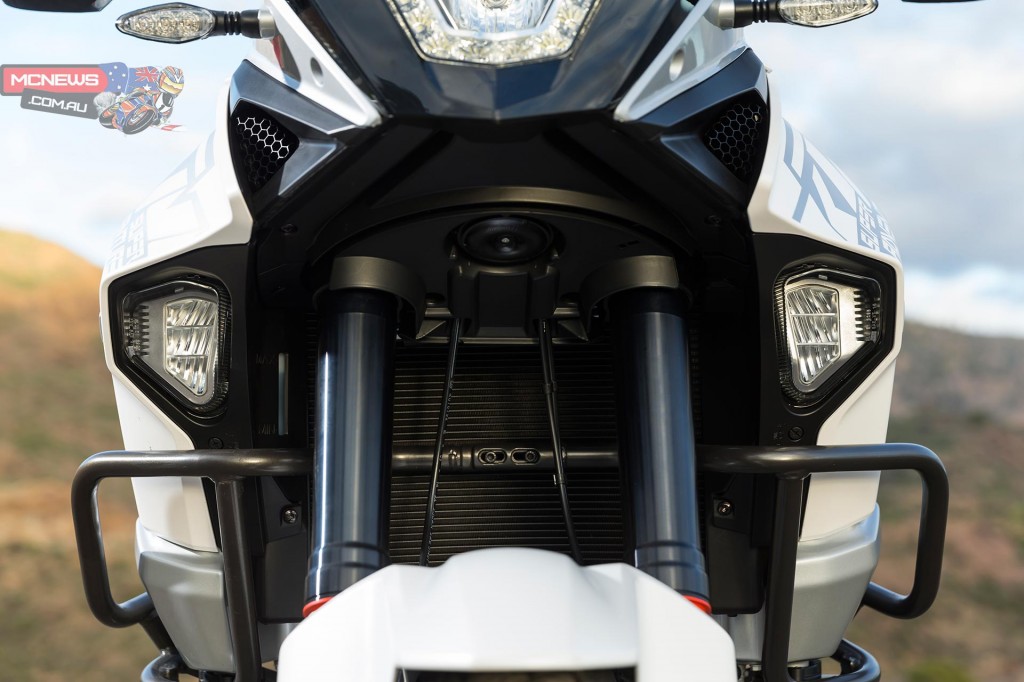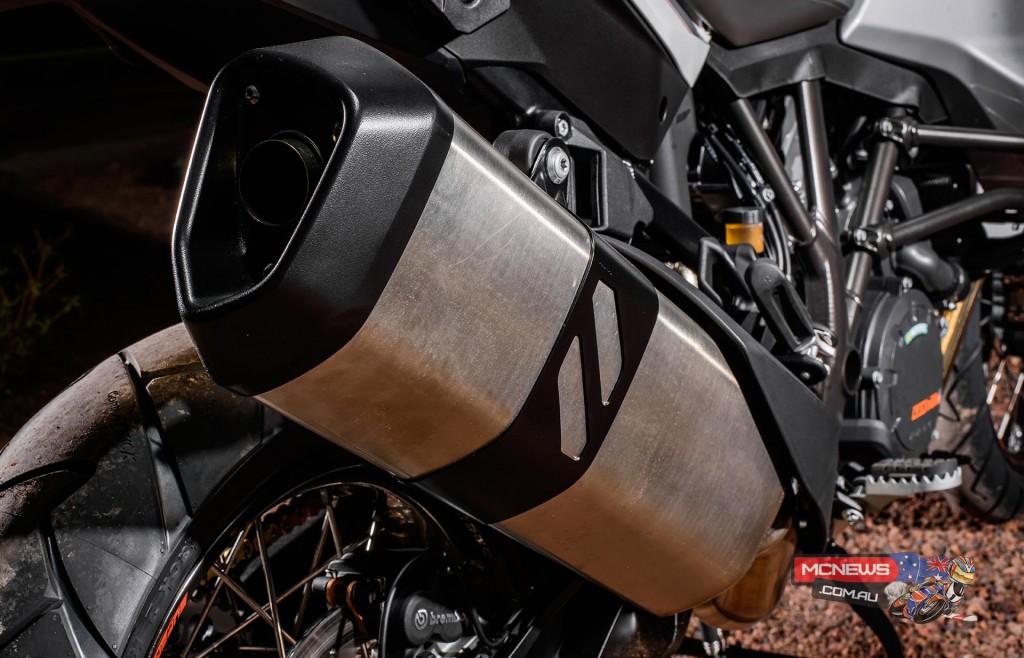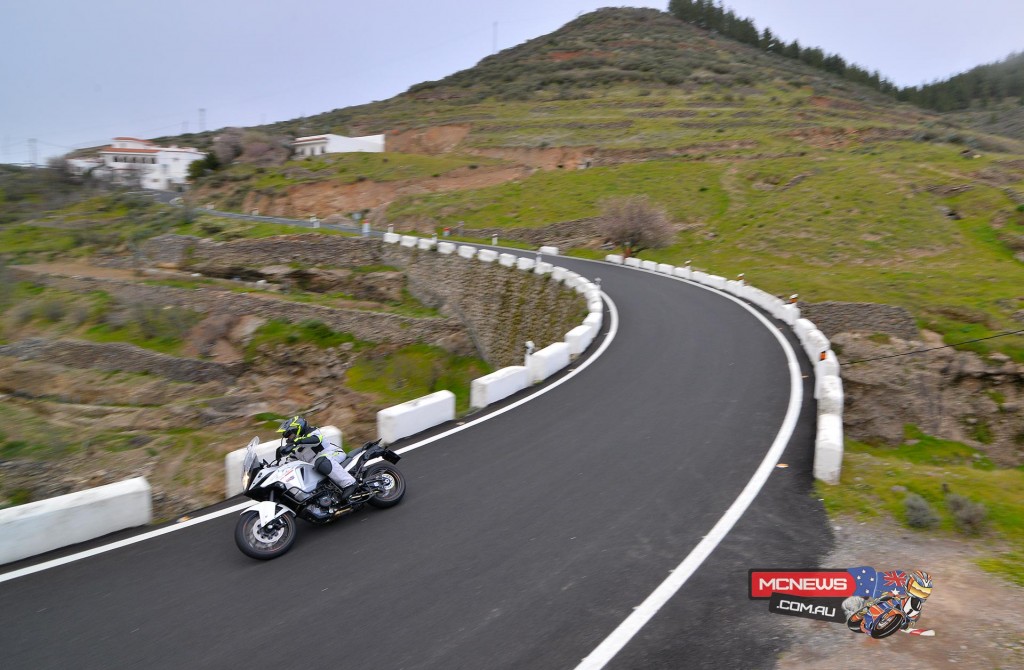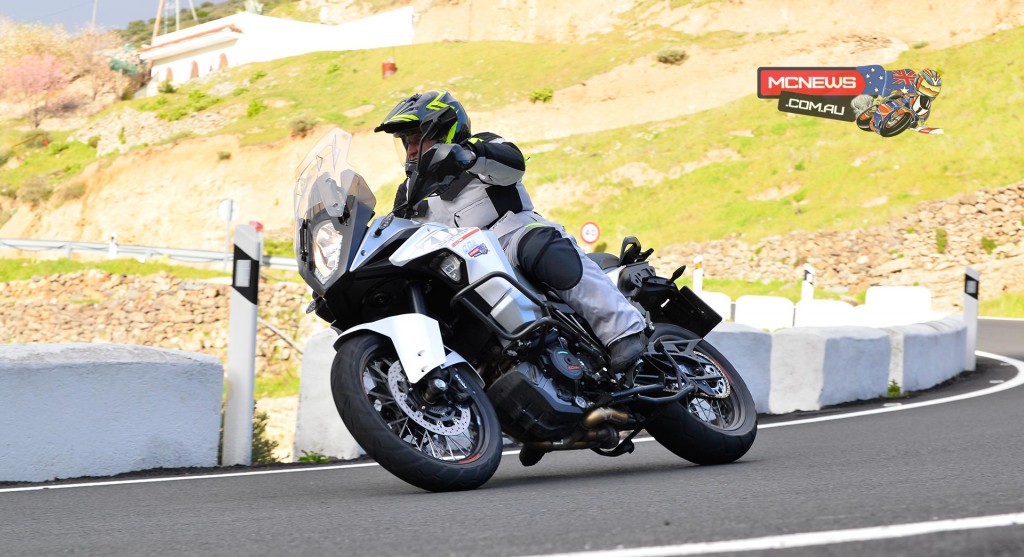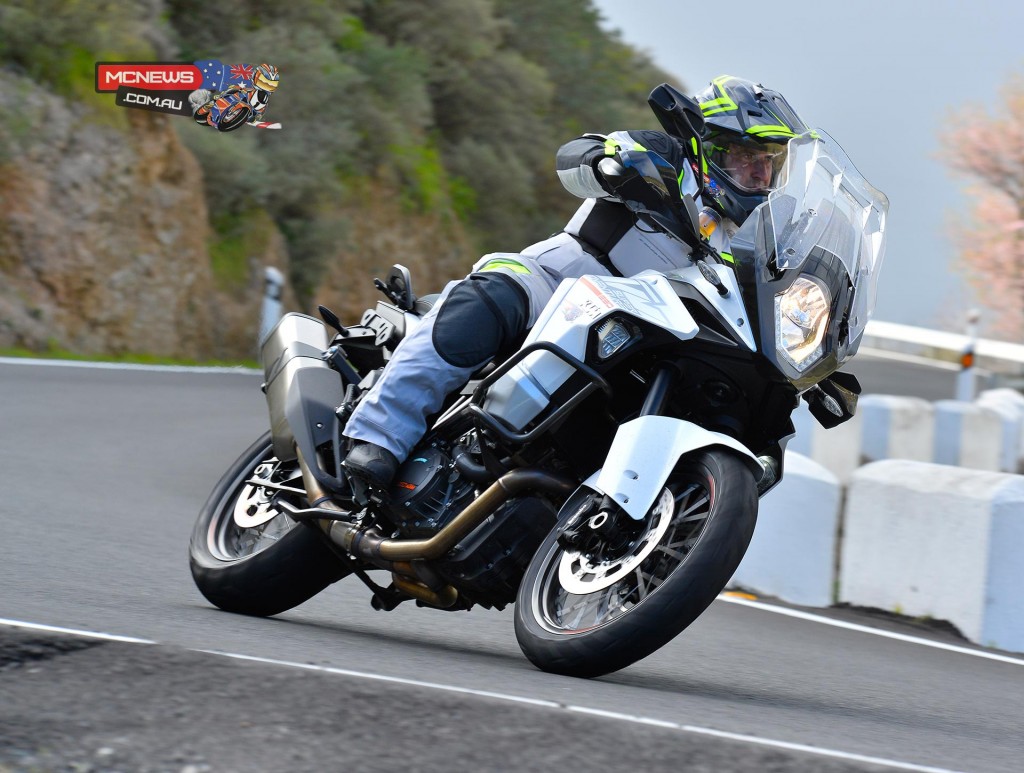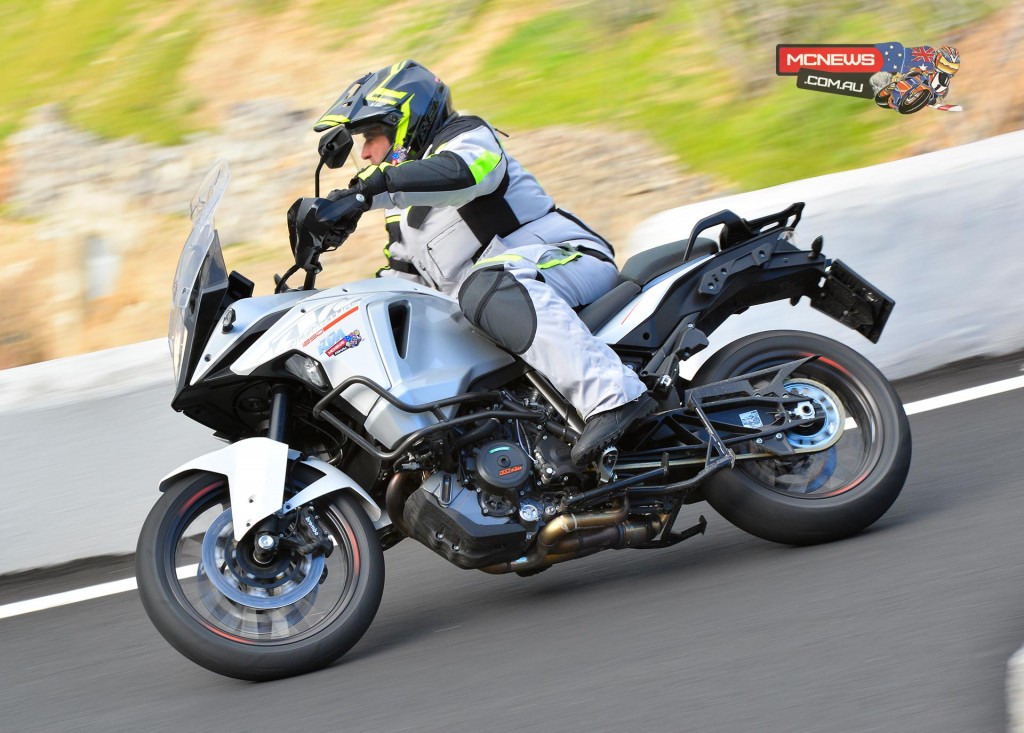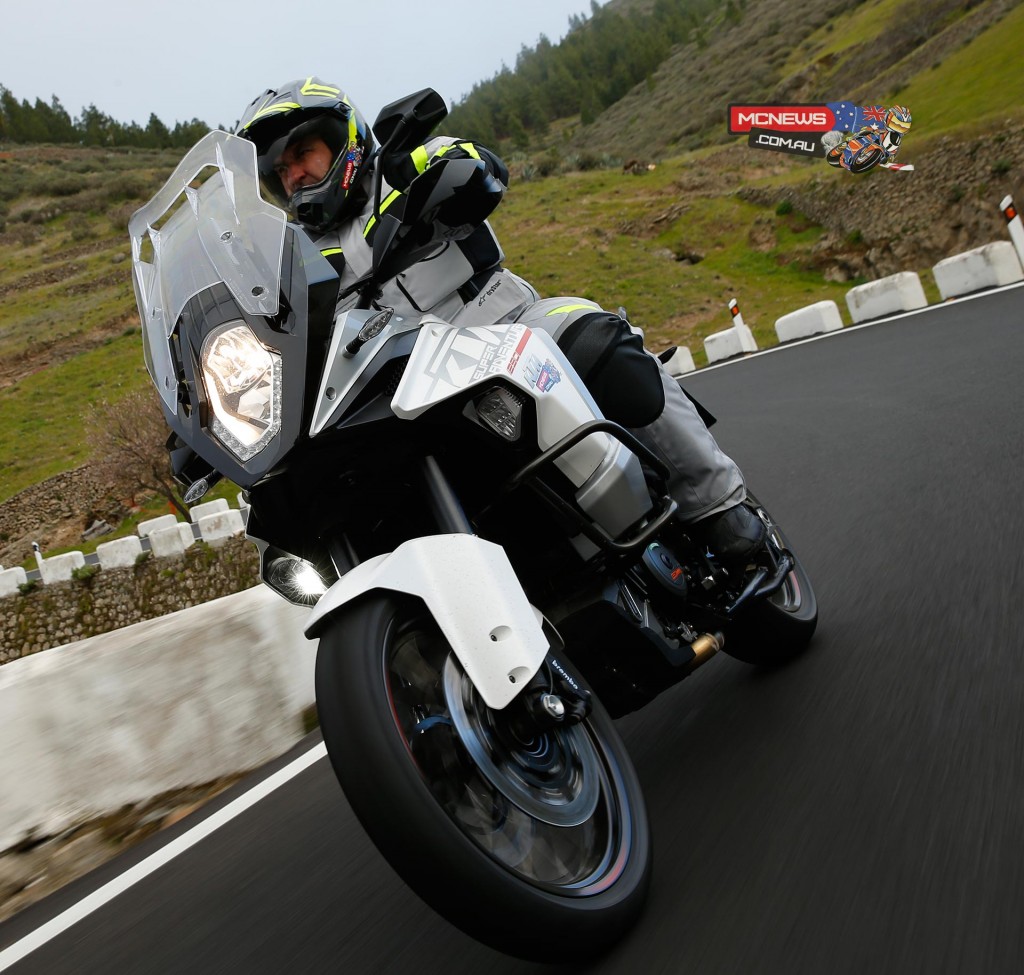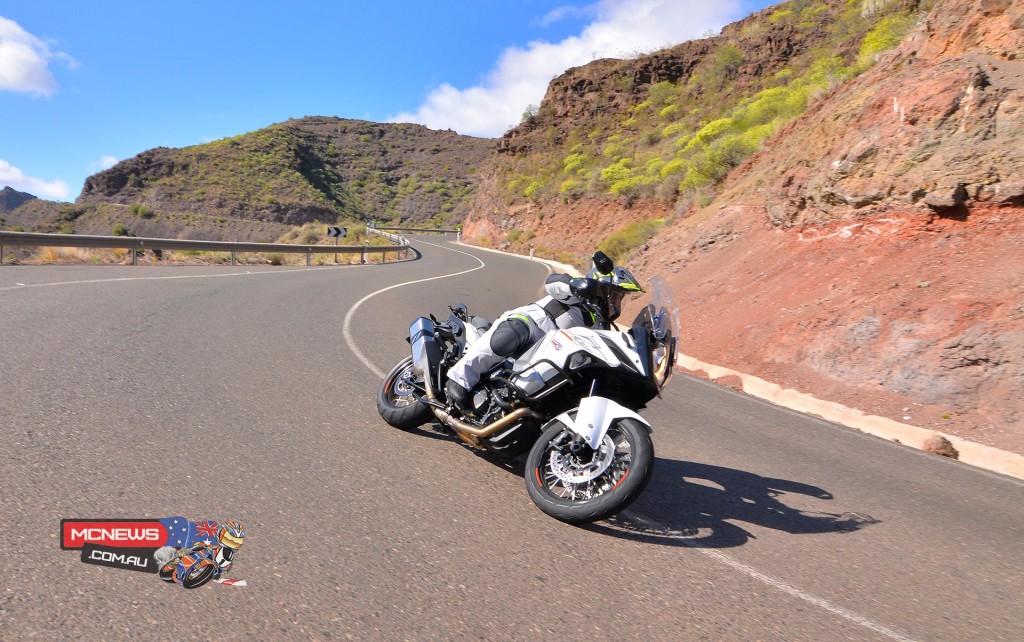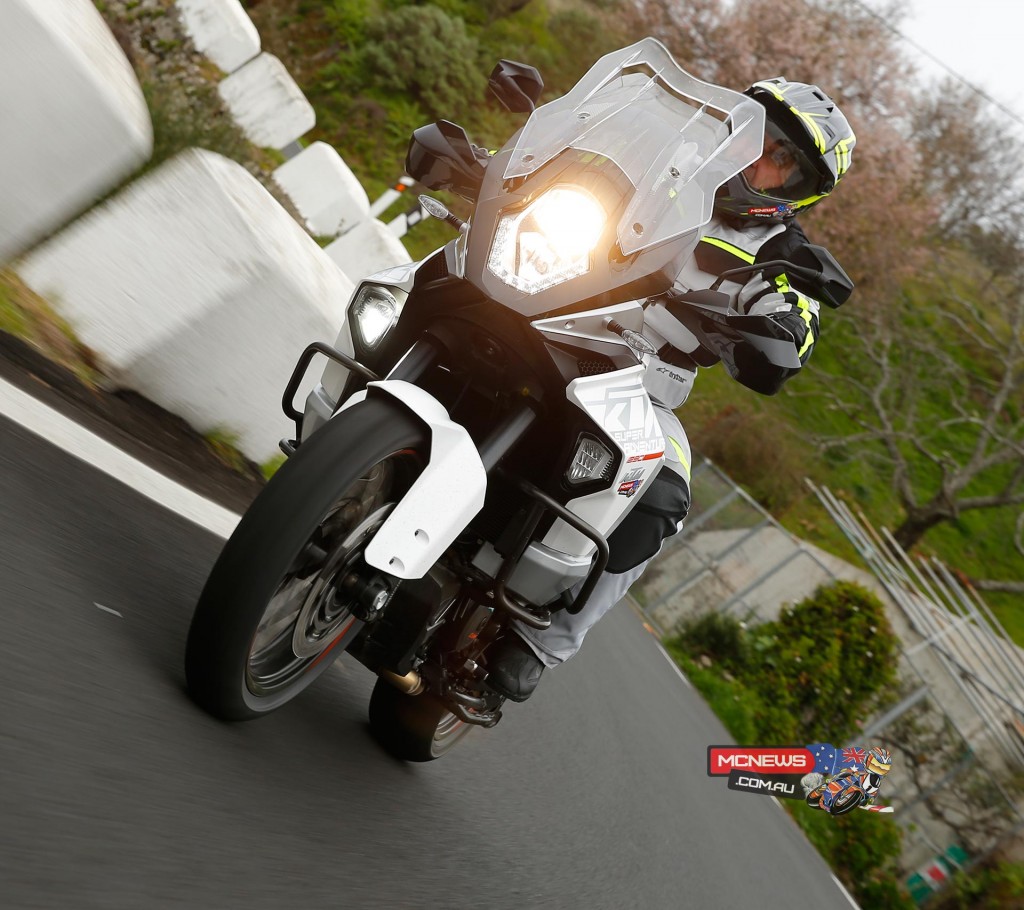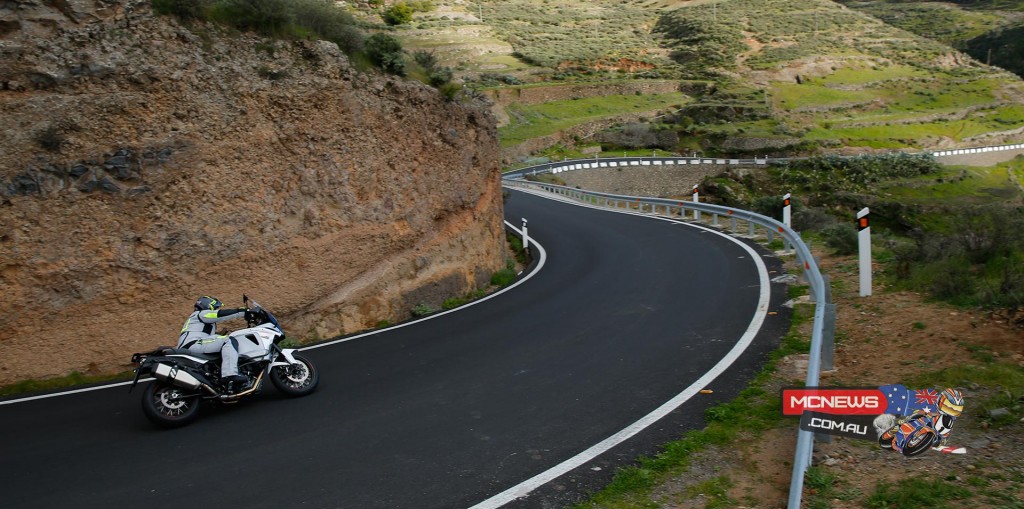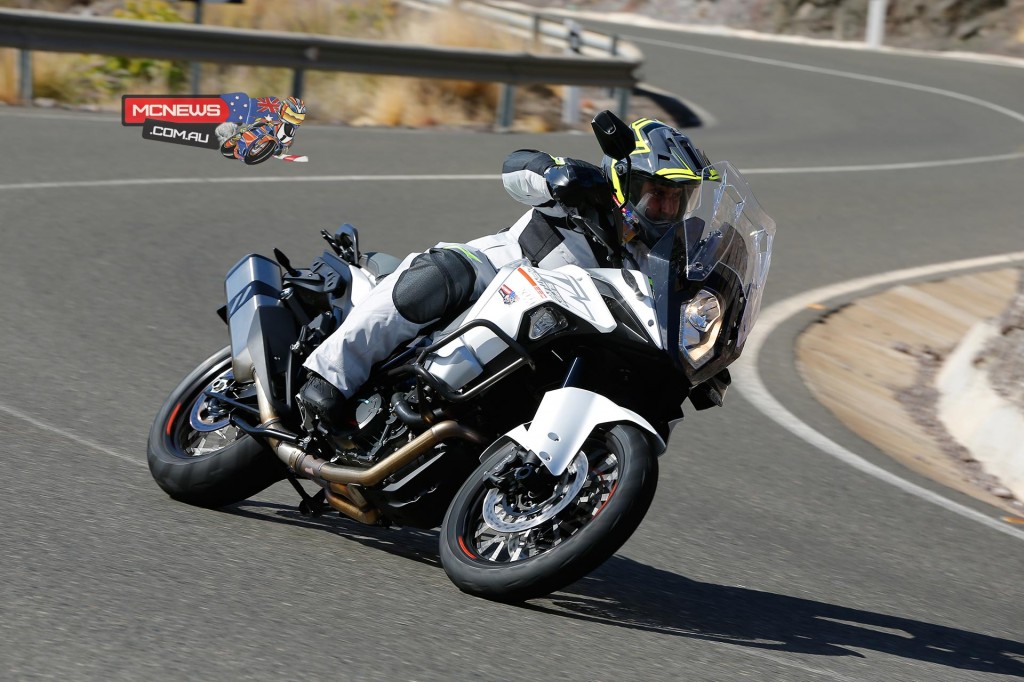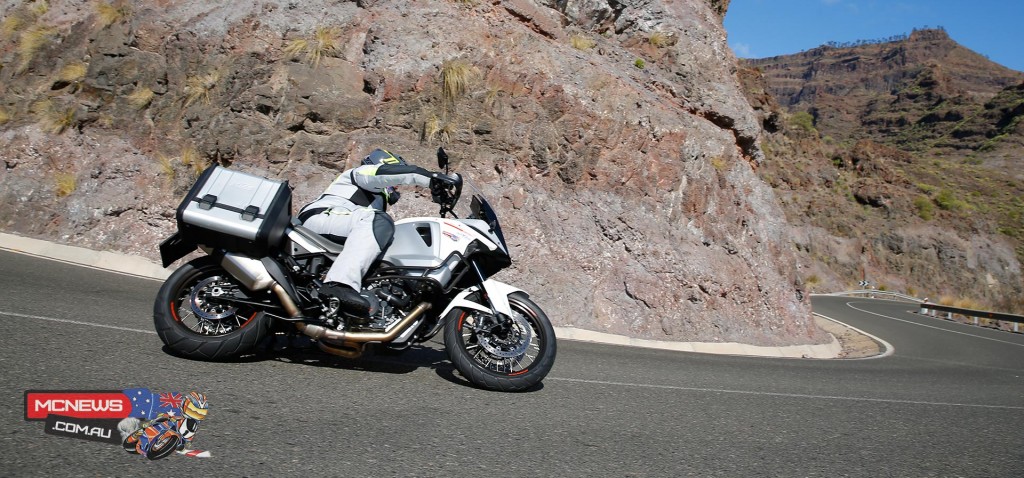KTM 1290 Super Adventure Review
Motorcycle Test By Trevor Hedge
KTM’s original twin-cylinder Adventure bikes were the real hard core adventure-tourer. The first KTM 950 Super Enduro is now already somewhat of a legend. It’s carburettor fed v-twin and Dakar inspired form the quintessentially hard core option when it comes to big-bore adventure touring. They are already very keenly sought after on the secondhand market.
Then came the 990 Adventure, which, particularly in the R specification with its extra ground clearance and real off-road ability, was again the weapon of choice for those that liked their off-road treks to be a little more adventurous than most.
More recently the 990 grew into the 1190, with, again, a hard-core R option complete with 21-inch front wheel, for those riders that favour off-road handling prowess above outright tarmac scratching on-road dynamics.
The 1190 also signalled a new technological era for KTM. In one model change they went from having the least electronic aids, and the most aggressive engine in the class, to having the best electronics package in motorcycling and excellent EFI response. The ABS and traction control systems, thanks to their new development partnership with Bosch, were a step ahead of what had been seen before.
Not only that, while the gruff and very angry LC8 engine had gained 196cc, it also went to finishing school for some manners, scoring an extra 33 horsepower over the previous R spec’ 990 in the process.
Despite the now prodigious 150 horsepower output, the 1190 was significantly easier to ride in tricky conditions than the 990. I know, I loved the 990 Adventure R I owned, but it was a very angry Mofo that did not suffer fools gladly.
Put the 1190 in off-road mode and the engine will find traction in places where a 990 would be slithering about all over the shop. For less experienced, or just simply more careful riders, the 1190 also has truly excellent ABS and traction control systems that really are a handy asset off-road that can truly save their bacon, while remaining unobtrusive enough to be left on by experienced riders without that horrible ‘computer says no’ feeling when it comes time to have fun.
For 2015 KTM have added two new machines to their adventure line-up. The 1050 Adventure, a more affordable and slightly lower specifcation version of the 1190, that still packs a significant punch and excellent eletronics suite. And the new big daddy of the range, the KTM 1290 Super Adventure. In this yarn it is this new mega all-roads Super Adventure that we will focus on.
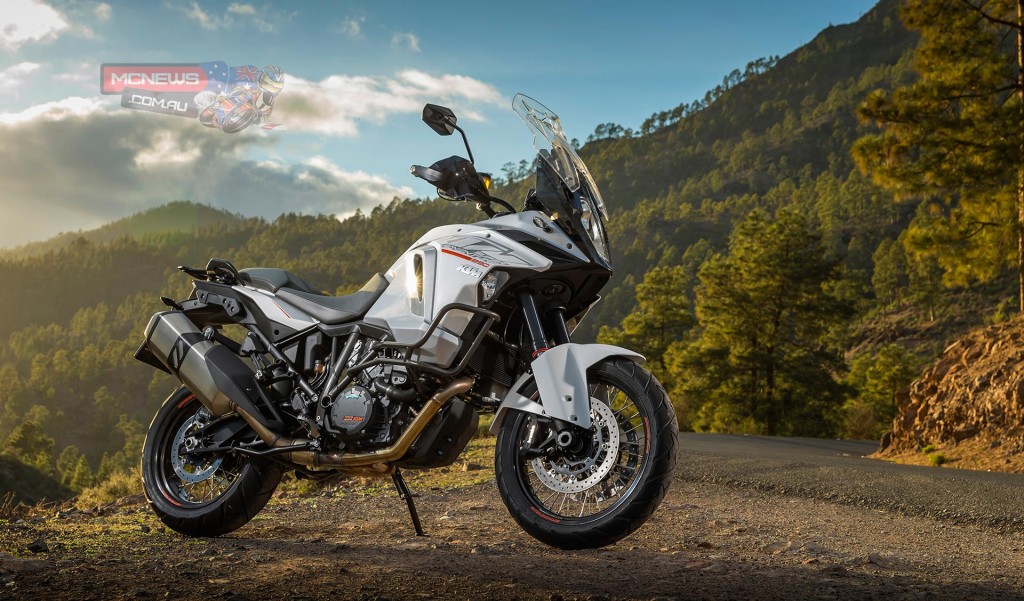
The first thing you notice about the 1290 Super Adventure, in comparison to its 1190 sibling, is clearly its sheer physical size and presence.
The 1290 Super Adventure is daunting, in the same way that BMW’s R 1200 GS Adventure is before the relationship is consummated. The extra width of the bike up front is due to the increased 30-litre fuel capacity. KTM then used the extra girth of the tank to shape a much more protective front cowling, better ducting to carry engine heat away from the rider, and bodywork flowing down to meet the forward edges of the wider tank which further helps shield the rider from the elements. The rear header is also insulated to help keep heat away from the rider’s nether regions at low speed.
There’s just no way of making a larger touring motorcycle with a big screen and weather protection look petite but, in the flesh, the 1290 Super Adventure does at least look quite classy. That impression aided by the beautifully finished, height-adjustable seats, which cosset your buttocks in a way that no other KTM can match.
The muffler is also quite attractive and the integrated pannier mounts nicely finished. Thanks to the move away from the high-mounted twin mufflers of the 990, the 1290 Super Adventure, likewise the 1190/1050 Adventure bikes, benefit from being able to position the luggage much closer to the centreline of the machine, the dynamic benefits of which, particularly off-road, I simply can’t overstate.
Once onboard, the 1290 Super Adventure shrinks around you, the machines confronting physical size and 229kg (without fuel) mass is quickly forgotten and you start throwing it around with the same sort of reckless abandon you exhibit on a large nakedbike. The upright riding position and wide bars giving a similar impression of invincibility from the saddle.
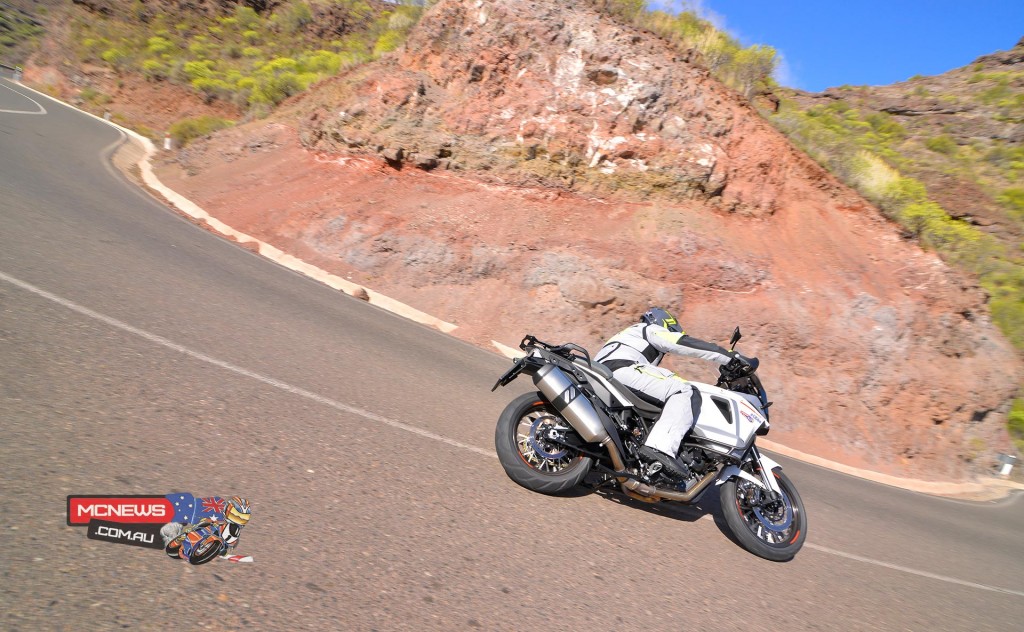
The Canary Islands based launch of KTM’s new flagship had no off-road component so we can’t comment on the off-road ability, but KTM assure us that they have benchmarked it against the big GS Adventure from over the border, and boast that it is eminently better off-road than the German machine, this is a KTM! But they they would say that, wouldn’t they… We will have to reserve judgements there, but to me it ‘looks’ as though the KTM might suffer more front end damage in an off-road tumble than the big BMW, but, on the flipside, there is no chance of taking out the cylinder heads on the KTM…
Crossing countries or continents with the maximum amount of comfort, weather protection and luggage carrying capacity looks to be what the Super Adventure is aimed at, rather than crossing sandy deserts shod with knobblies. That’s not to say anyone should be averse to tackling pretty much any gazetted dirt road that take you from A to B, via C and D, across this wide, brown, land.
With an awesome Superduke 1290 derived engine, semi-active suspension, heated seat and grips, cruise control, excellent weather protection and a 30-litre fuel tank there seems to be little else in motorcycling that is as well equipped to transport you and your gear across the country. The pillion seat even has independent heating controls to cosset your partner’s nether regions with a comfortable warmth while on the fly…
Add to that an off-road friendly 19-inch front rim, spoked, of course, off-road modes for the suspension and electronic aids and you can also, with some degree of safety, tackle moderate off-road terrain if, and when, the mood, or necessity, takes you.
So how does it go…?
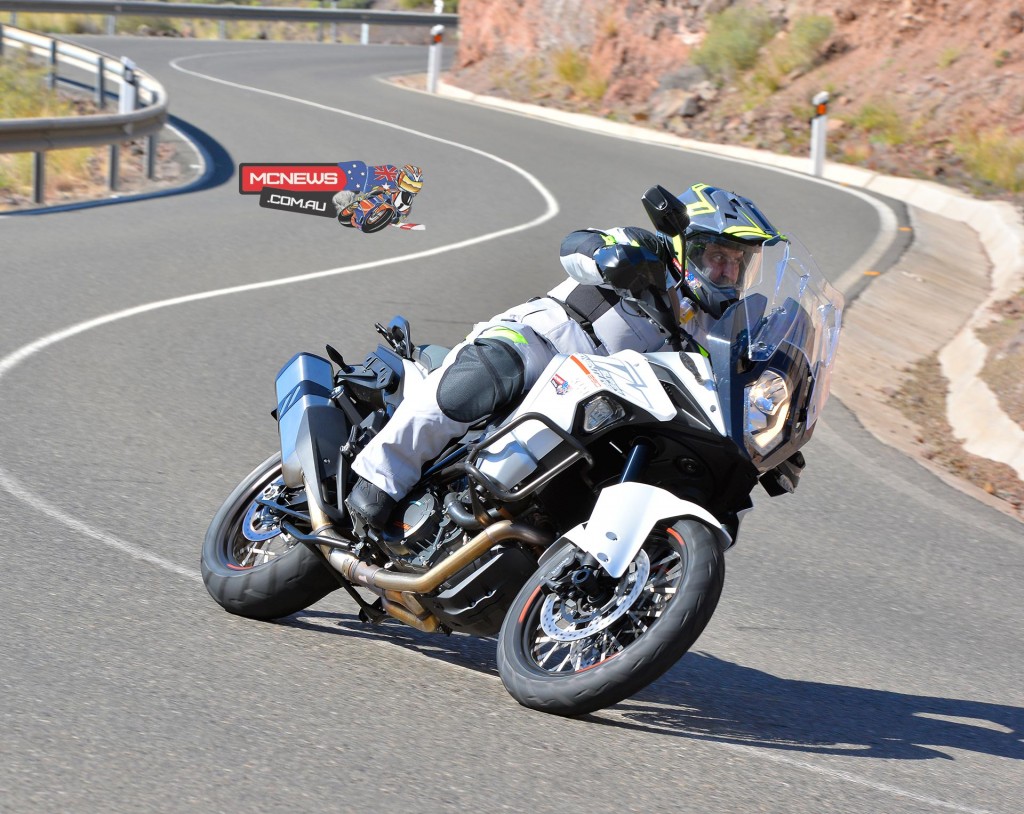
The 1301cc engine is moderated slightly from the 180 horsepower of the 1290 Superduke, to 160 horsepower and 140Nm of torque in Super Adventure guise, complete with a 2kg heavier crank to help smooth out those power pulses. Those numbers would have seemed totally ridiculous ten years ago in the most hedonistic hooligan sportsbike, and even in modern terms those numbers are still pretty impressive. That torque figure is in the same ballpark as Ducati’s latest 1299 Panigale and is actually a little higher than Kawasaki claims for their supercharged mental case H2…
However, the really amazing feat is that, thanks to the wonders of modern cylinder head design and engine management systems, the KTM pulls smoothly from down low in a strong and linear fashion. The only other Austrian with this much low-down pull was big Arnie when he was drip-fed gear through an IV connected to a 20-litre drum.
The Super Adventure engine is useable right down to 2500rpm, a part of the rev range where the 990 pig-rooted like a bastard, with some seriously ugly chain snatch to boot. At that 2500rpm figure the 1290 is already putting almost 110Nm of torque to the ground.
Putting things really into perspective as to how far KTM has come is the fact that the angy rip-snorter of an engine that was the 990 made its maximum torque of 100Nm at nearly 7000rpm. A number that the 1290 tootles around with just off idle and puts to the ground in such a smooth, efficient way that you would never imagine they both share their 75-degree LC8 lineage and came from the same factory. The engine is also appreciably stronger, everywhere, than the also very mighty, 1190 Adventure engined machines, along with clear improvements in low-speed manners.
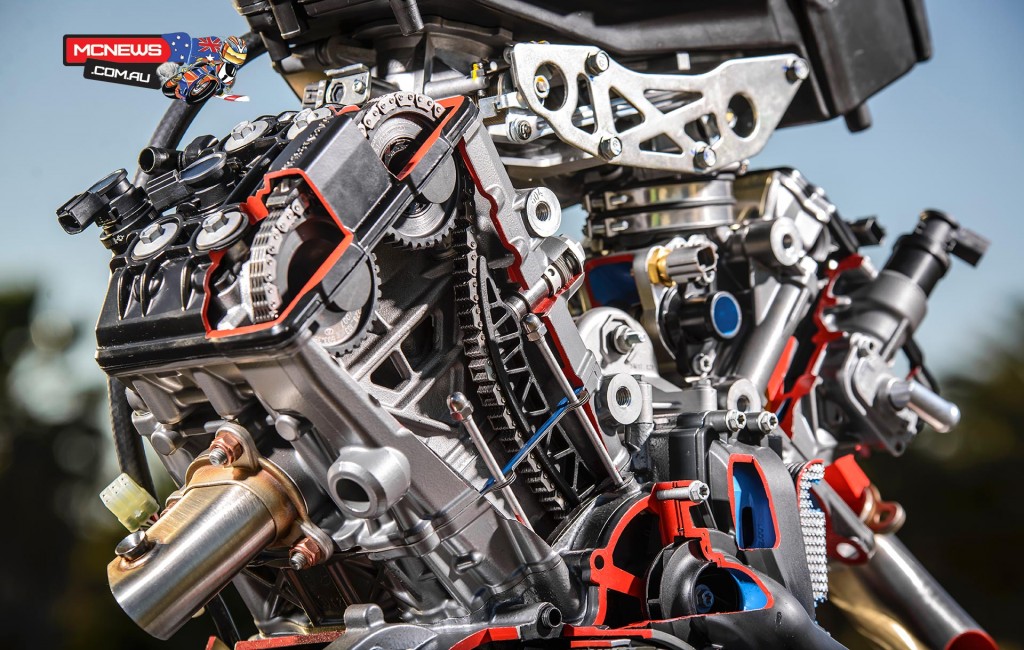
Something that does feel the same as 990 is the very light, almost too light, shift action of the six-speed gearbox. It is a little more positive than the 990, which is welcome, but if coming from another type of machine then it will still feel too light at first. If coming from a BMW boxer it will feel, well, actually you just won’t feel anything at all such is the delicate engagement of the KTM’s cogs in comparison to the relatively agricultural box of the GS, even with BMW’s fancy quickshifter.
Likewise, the lack of any perceptible driveline lash in the KTM is world’s apart from its German competitor. A spring loaded anti backlash gear has been added between the primary drive and the clutch, which helps make the driveline silky smooth. It is in this gearbox and final drive area where the KTM really does feel a quantum leap smoother than the BMW. The German machine sports a shaft drive system, while KTM have chosen a conventional chain drive set-up. For some riders only a shaft-drive will do, due to their lack of maintenance requirements, but it must be said that if you can’t get at least 20,000km out of a good quality set of chain and sprockets, even with zero maintenance, then you must be doing something wrong. And of course, long term, the life-of-machine costs of chain and sprockets, at say $400 a throw, have to be weighed up against the possible chance of a very expensive shaft drive replacement due to impact damage or an out-of-warranty failure down the track.
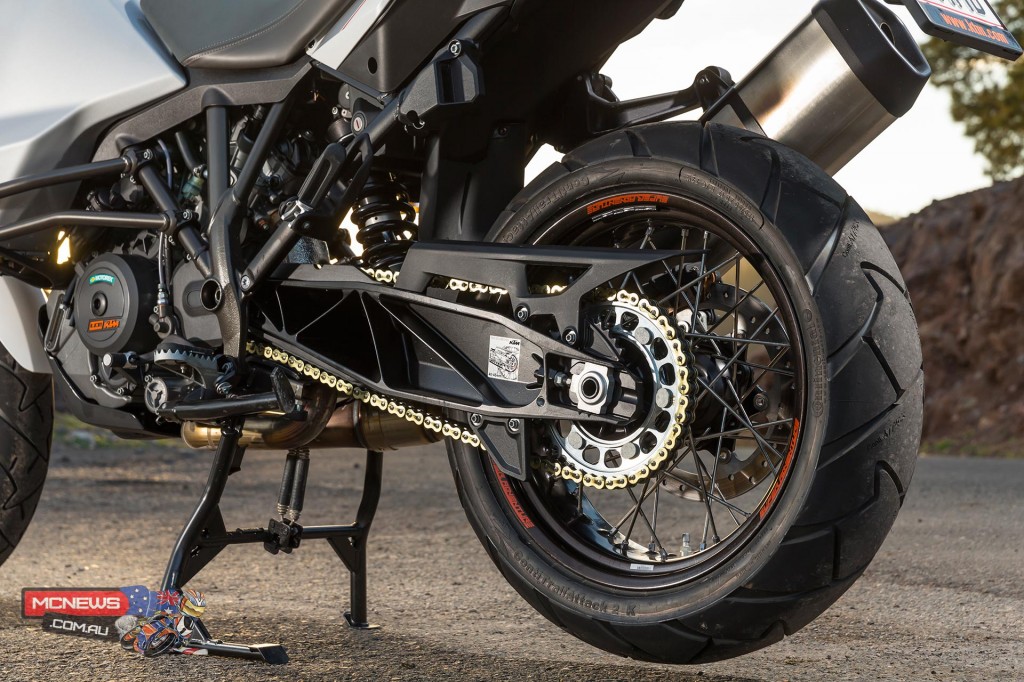
A pair of generously sized floating 320mm discs and, now almost de rigeur for a top shelf machine, radial four-piston Brembo calipers proved plenty strong enough during my time with the machine. Even fully loaded with a pillion they should still prove up to the task but I had expected a larger rear disc than the 267mm rotor fitted to the bike. Lots of low-speed or off-road work could possibly overheat that relatively small rear disc. That said, the semi-active suspension system and smooth power delivery does negate somewhat the need for excessive riding of the rear brake.
The forks let you use those front brakes with full ferocity as, due to their semi-active nature, they instantly respond to control any excessive front end drive. The computer knows how much pressure you are putting on the lever, and the corresponding deceleration rate of the bike, and instantly reacts to keep the bike composed with fore-aft pitching kept to a minimum. Something that your pillion will also appreciate.
Backed up by excellent stability and ABS systems, you can perform some tremendously ludicrous levels of stupidty at the controls and the big KTM will still make rapid forward progress, and, almost, make you look like you know what you are doing.
In off-road mode the traction control systems allows progressive slides, along with much less intrusive ABS and the back brake is deactivated from the system to allow for brake slides into a turn. Traction control can also be deactivated.
Get too confused and smash down one too many cogs and not only does the slipper clutch counteract your foolishness, but the ECU also cracks the throttle butterflies open, to help reduce the engine braking effects that those gargantuan 108mm slugs and heady 13.1:1 compression ratio can produce. If you are leaned over the bike also knows this, and reduces the engine braking even more to further help save you from your own fatuous folly.
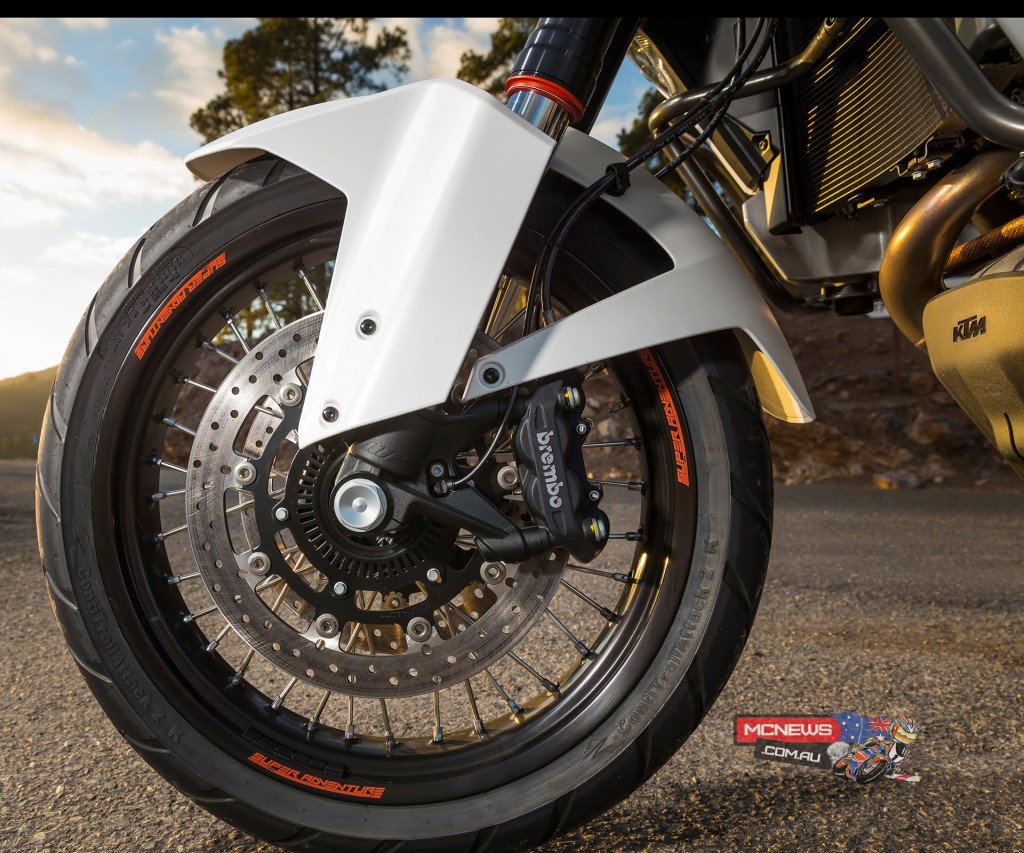
Dynamically the KTM is quite light on its feet and a very willing partner when the blacktop turns tasty. It steers nicely, even with that 19″ front, and thanks to its semi-active suspension always seems to provide the right amount of damping should you be on the brakes, on the gas, or somewhere inbetween. It does this of course by reading the inputs you are making to the throttle or brakes and adjusting the suspension accordingly. Firming the damping up under brakes at the front as you squeeze the lever, or adjusting the compression on the rear to control squat as you roll on the throttle. Hit a big bump and it automatically stiffens through the stroke as it senses the high rate of compression, then also adapts itself to control the rebound from that hit, helping to ensure the tyres maintain their grip on the road, while protecting the rider from any unexpected kidney punches.
The 48mm closed cartridge right fork leg houses the electromagnetic damping valves that control the compression and rebound for any given scenario. It’s response guided by the riding mode selected via the bars; Sport, Street, Comfort of Off-Road the four choices available to the rider.
The left fork leg houses the 12Nm spring and associated travel sensors that measure what is going on and relay that information to the ECM in real time, which then dictates to the damping control circuits in the right fork leg.
In Sport mode the system actually allows a little more front end load bias under brakes to help preserve a more natural steering feel when trail braking into a turn.
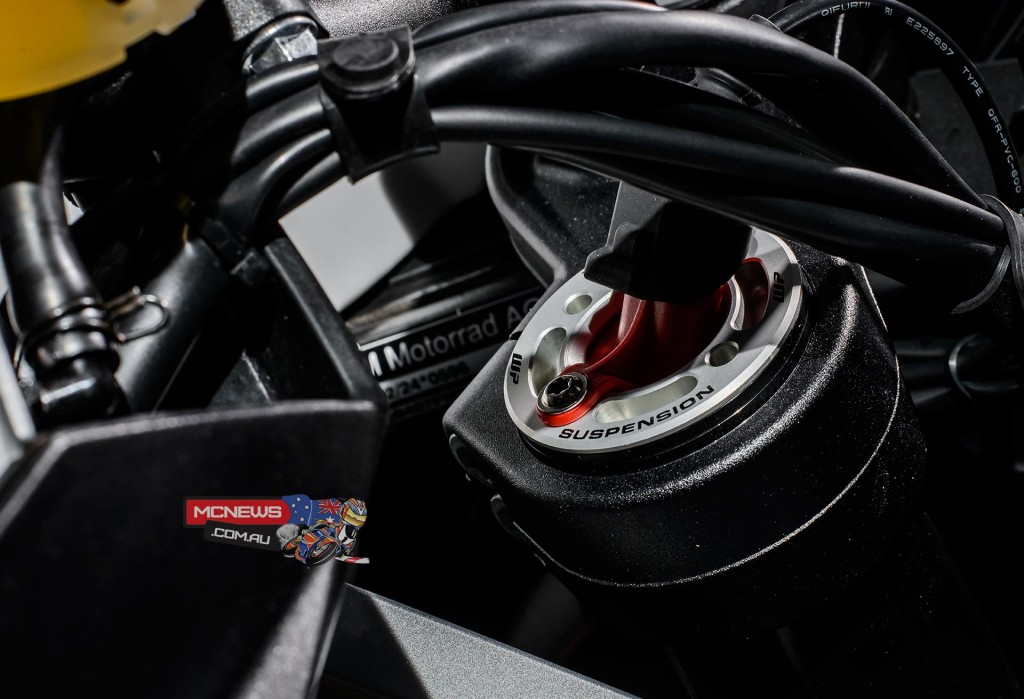
Rear preload is set from a bar controlled interface via the suspension menus in the easy to read LCD display situated to the left of the large conventional 12,000rpm tachometer. This LCD changes through various other sub-menu screens which include oil temperature, air temperature, battery level, tyre pressure ansd various trip meter functions.
To the right of the tachometer is another large LCD display that clearly shows speed, fuel level, engine temperature, gear selected, the time and the selected riding mode.
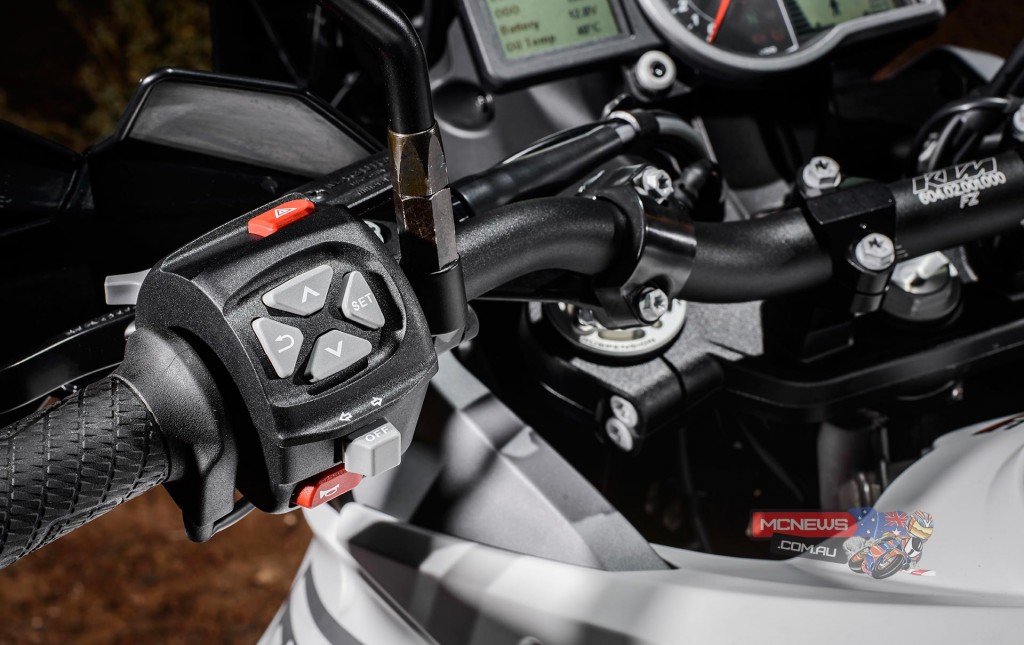
Where these systems really come into their own, from a performance point of view, is in the tight cut and thrust of tortuous roads with rough surfaces, as the bike is aware of what is going on and always seems to keep the bike composed, with dive well controlled and excessive squat resisted. It is only when you do the same road on a bike with conventional suspension that you relly get a feel for just how much more poise, and grip, semi-active suspension systems provide on road surfaces that are less than perfect.
Or, on the highway, with the cruise control engaged to save your licence, you can just dial in comfort mode and revel in the soft cosseting of luxobarge tourer style suspension.
Best of both worlds, and no need to twirl a c-spanner or get a screwdriver on to the damping, just select the riding mode from the left handlebar, while on the fly mind you, and let the boingy bits control the boing for you. A virtual suspension tuning expert is with you on every ride and the electronics enable the Super Adventure to offer a generous 200mm of suspension travel, at both ends, while retaining a level of precise control right throughout that long stroke that would be completely impossible with conventional suspension components.
Go your hardest under brakes, or try and twist the go-tube off the bars and let WP sort the virtual clickers out.
There is also a WP steering damper, something that the earlier 990 Adventure machines sadly lacked.
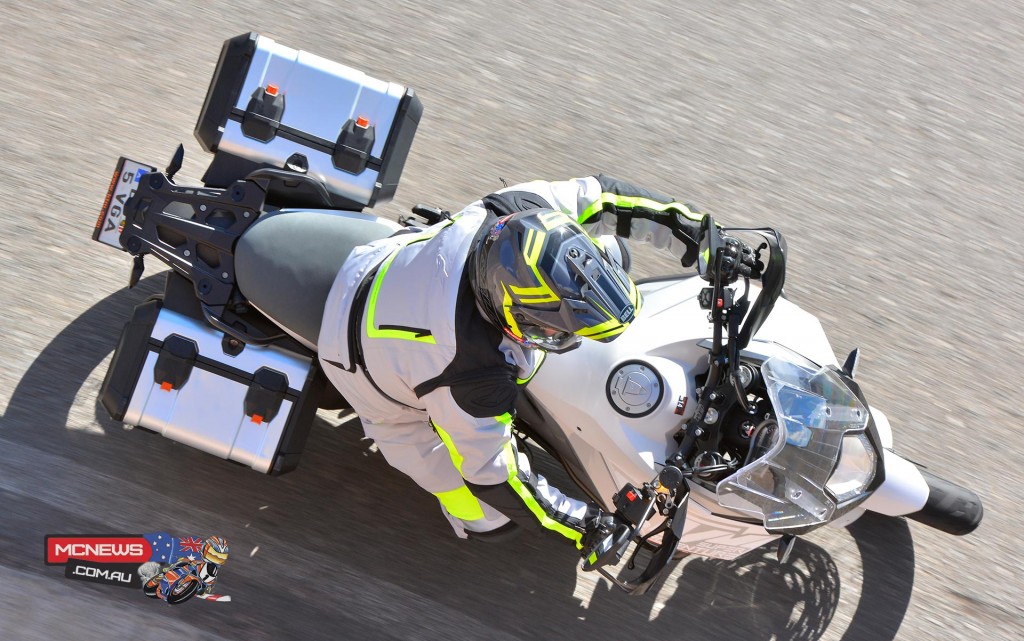
The tech continues to the lighting system. An LED daytime running light nacelles the trademark KTM style headlight, but, it’s down on the front flanks of the machine that things get more interesting.
A bank of three vertically stacked LED driving lights adorn the front inside edge of the bodywork. Doesn’t sound all that tricky, but it actually is, as they only light up as you bank around the corner. And the angle of the dangle dictates how many of the LED lamps illuminate the inside of the corner you are negotiating. Really start cranking and all three light up, almost like hitting a bullseye at a theme park and the light going off at the top of the stand. The lights illuminate at 10-degree intervals once past 30-degrees they are all pointing the way around the turn. I tried it out and it does work, providing visibly more illumination of the corner. I could actually see the intensity increase as I banked further into a turn at dusk. Still, I guess you sort of have to ask KTM, why? Because they could, I guess….
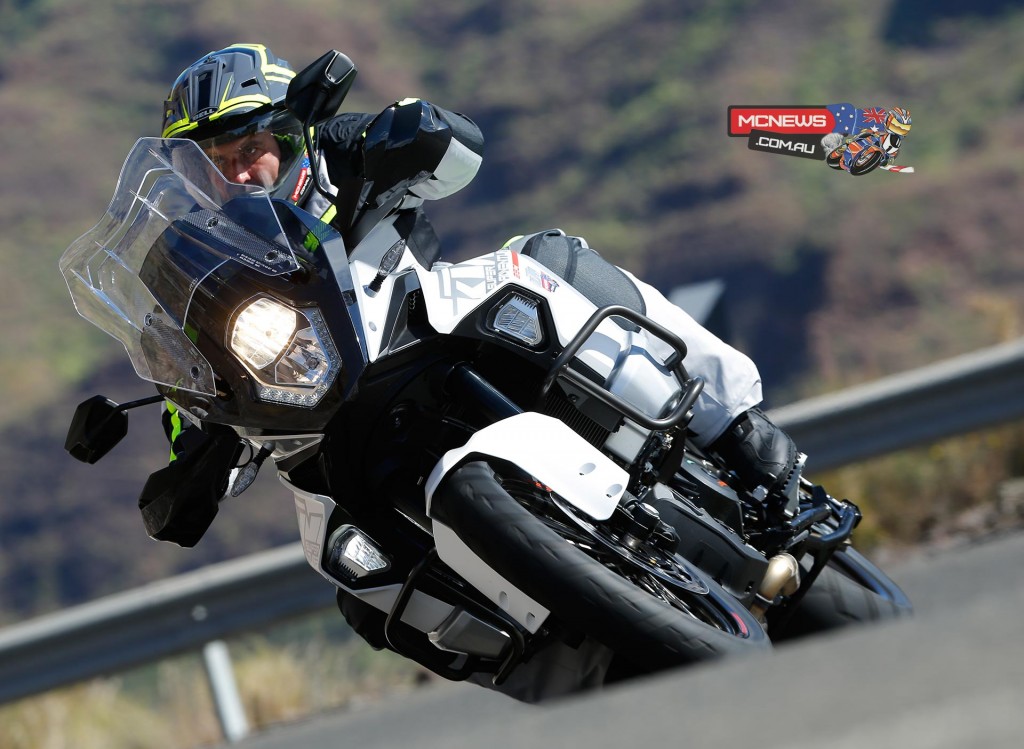
Apart from luggage and some other trinkets there are few optional extras on the Super Adventure as it is pretty much fully loaded from the off. One tricky little option however is Hill Hold Control. With this $200 option the bike senses when it is on a hill at a standstill, it knows everything you see, and keeps the brakes applied for five seconds. Just enough to stop the machine moving backwards, so the rider can concentrate on a smooth uphill start. Perhaps not a huge feature when solo, but if loaded up the gunwales with luggage and a pillion it could be a godsend.
So in a nutshell what you have in the 1290 Super Adventure is ‘almost’ the touring luxury comfort and features of a Gold Wing, a little of the off-road performance of an 1190 Adventure, the handling prowess of a sporting nakedbike, the torque of a 1299 Panigale and the horsepower of a Fireblade combined with all the latest electronic advances in semi-active suspension, traction control and ABS. Sounds pretty good doesn’t it? Too damn right it does, and considering how much performance, comfort, technology and features are on this bike as standard at $26,995, roughly $1000 less than a comparably specced R 1200 GSA, it also represents pretty good value.
I can’t think of a better bike to ride around Australia on as there is no other motorcycle that effectively marries this amount of performance, luxury, comfort and versatility all in the one standard package as well as KTM has managed in the 1290 Super Adventure. None.
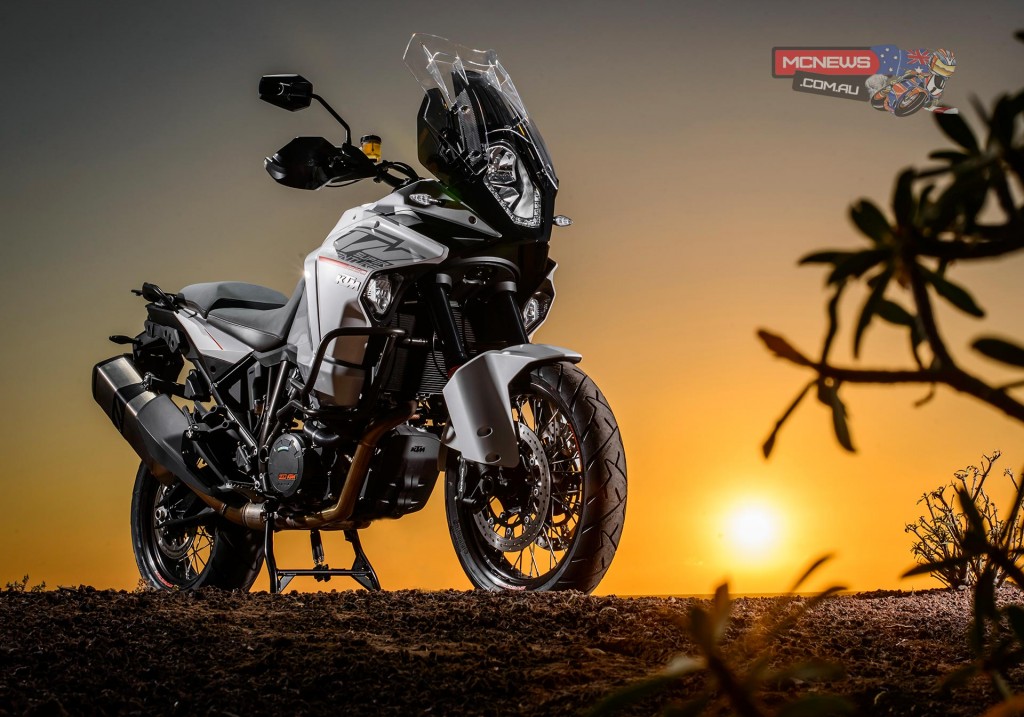
KTM 1290 Super Adventure Specifications
- Engine – 1301cc, 75-degree, v-twin
- Bore x Stroke – 108 x 71mm
- Claimed Power – 118 kW (160hp) at 8750rpm
- Claimed Torque – 140Nm at 6750rpm
- Compression Ratio – 13.1:1
- Induction – Keihin EFI with 52mm throttle bodies
- Lubrication – Pressurised with 3 x Eaton pumps and Motorex 10W-50
- Transmission – Six speed, 17:42 x-ring chain final drive
- Clutch – PASC Slipper Clutch, hydraulic
- Engine Management – Keihin EMS with ride by wire and cruise control, twin plugs per cylinder
- Traction Control – MTC 4-Mode
- Frame – Chro-Moly-Steel trellis frame, powder coated
- Subframe – Aluminium, powder coated
- Bars – Aluminium, tapered 28/22mm
- Front Suspension – WP semi-active inverted 48mm forks, 200mm travel
- Rear Suspension – WP semi-active PDS monoshock, 200mm travel
- Front Brakes – 320mm discs, Brembo radial four-piston calipers
- Rear Brake – 267mm disc, Brembo twin-piston caliper
- ABS – Bosch 9ME Combined ABS (Cornering ABS and off-road mode, disengageable)
- Rims – Spoked alloy tubeless, 3.5×19″ (F), 5×17″ (R)
- Tyres – 120/70R19 (F), 170/60R17 (R)
- Steering Head Angle – 64-degrees
- Trail – 120mm
- Wheelbase – 1560mm
- Ground Clearance – 220mm
- Seat height – 860/875mm
- Fuel Capacity – 30 litres
- Weight – 229kg with all fluids but minus fuel
- RRP – $26,995 +ORC
Gear worn by Trev is Alpinestars suit, Alpinestars Toucan Goretex Adventure Boots and new Bell MX-9 Adventure
Full Technical Presentation on the KTM 1290 Super Adventure
